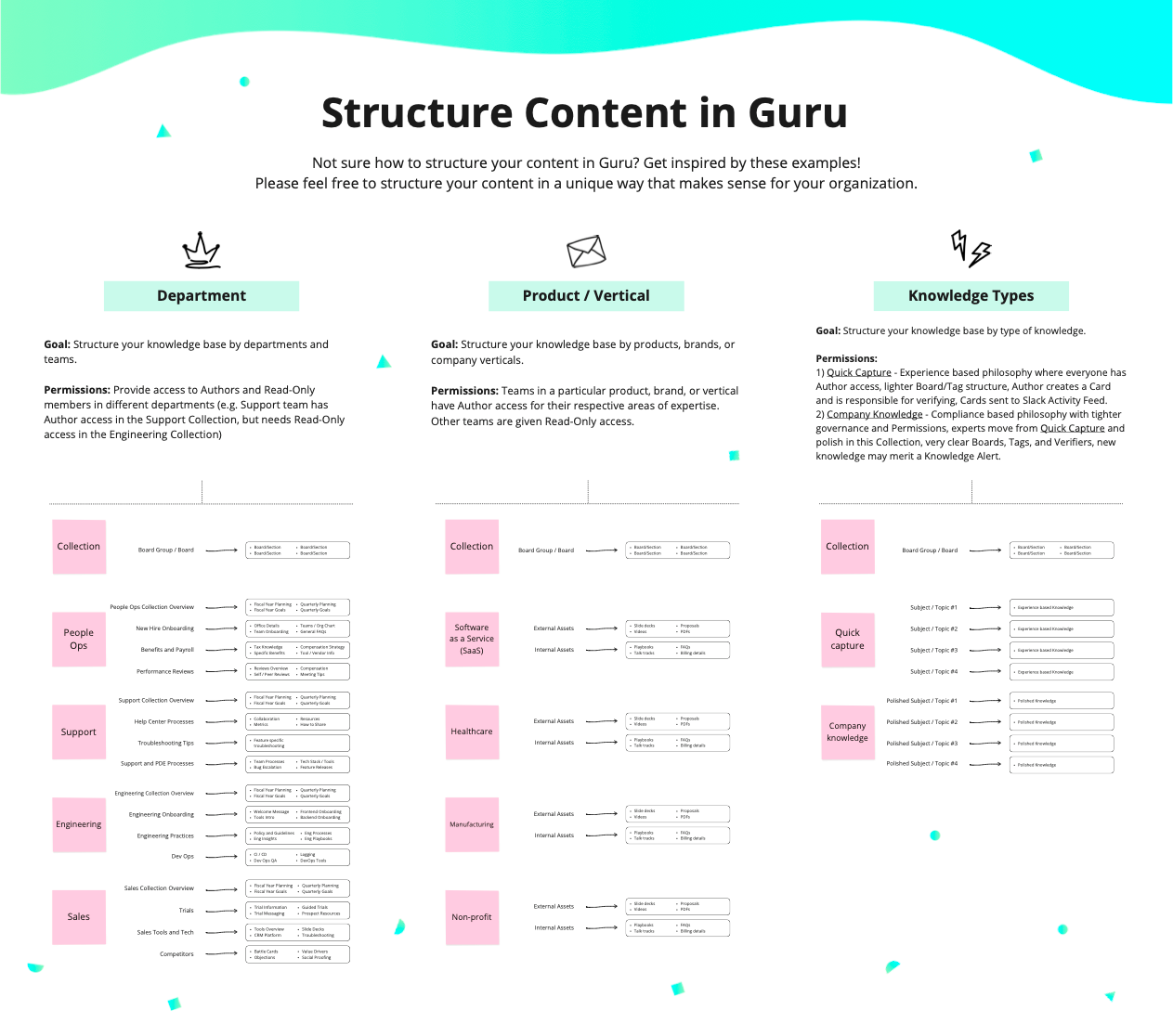I’m having a little trouble understanding how I should structure my content so that it makes sense to the end users.
I need to create help docs for applications usage like email, leave management, database tools, etc. The problem is some of these applications are used company-wide while others are specific to an individual department.
If I structure my collections by department, where do the common applications belong? It seems it might be confusing for users to have their application docs spread across multiple collections.
How are others handling this? Do you just put all your app usage docs in a single collection, spread them across multiple collections or do you create duplicate boards/cards for each department?


